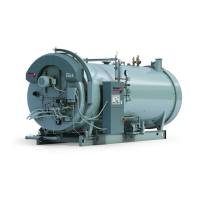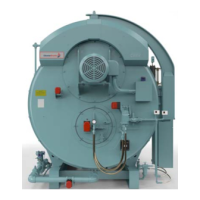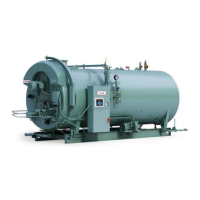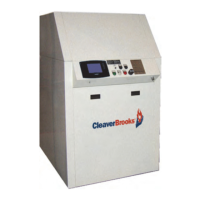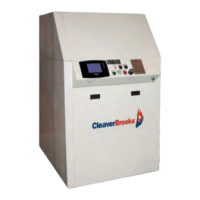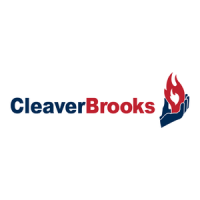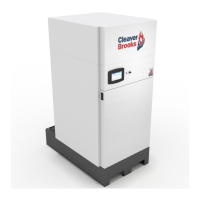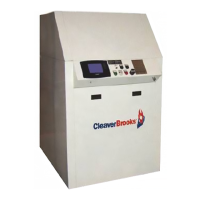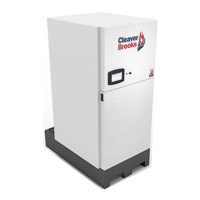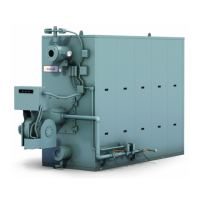Flue and Combustion Air Venting
3-2
750-382
CBT
3.1 — Venting connections - general
Proper installation of flue gas exhaust venting is critical for the efficient and safe operation of the boiler.
Definition of Appliance Categories
Boilers are divided into four categories based on the pressure and temperature produced in the exhaust
stack and the likelihood of condensate production in the vent.
• Category I - A boiler which operates with a non-positive vent static pressure and with a vent gas temperature
that avoids excessive condensate production in the vent.
• Category II - A boiler which operates with a non-positive vent static pressure and with a vent gas temperature
that may cause excessive condensate production in the vent.
• Category III - A boiler which operates with a positive vent pressure and with a vent gas temperature that avoids
excessive condensate production in the vent.
• Category IV - A boiler which operates with a positive vent pressure and with a vent gas temperature that may
cause excessive condensate production in the vent.
The Model CBT will in most applications be considered a Category III boiler. In certain applications, such as
with a condensing economizer, Category II or IV venting criteria may apply.
For additional information on boiler categorization, see latest edition standard of National Fuel Gas Code or in
Canada, the latest edition of CGA Standard B149 Installation Code for Gas Burning Appliances and Equipment,
or applicable provisions of local building codes.
During winter months check the flue termination and make sure no blockage occurs from build up of ice or
snow. Condensate can freeze on a flue termination. Frozen condensation at the flue termination can result in a
blocked flue condition.
3.2 — Flue venting
The flue should be supported to maintain proper clearances from combustible materials.
Use insulated vent pipe spacers where the venting passes through combustible roofs and walls.
Cleaver-Brooks recommends the use of flue venting systems that are certified to UL 103 or ULC C-959.
Flue systems constructed of stainless steel are recommended. Please note: Type B vent is NOT appropriate
for Category II, III, or IV boiler systems.
3.3 — Vent terminal location
Give special attention to the location of the vent termination to avoid possibility of property damage or
personal injury.
1. Combustion gases can form a white vapor plume in the winter. The plume could obstruct a window view if
the termination is installed in close proximity to windows.
2. Prevailing winds could cause freezing of condensate and water/ice buildup on building, plants or roof.
Contact the manufacturer of the vent material if there is any
question about the boiler categorization and suitability of a
vent material for application on a Category III vent system.
Using improper venting materials can result in personal
injury, death or property damage.
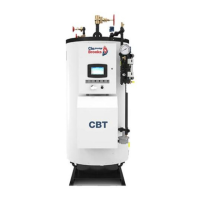
